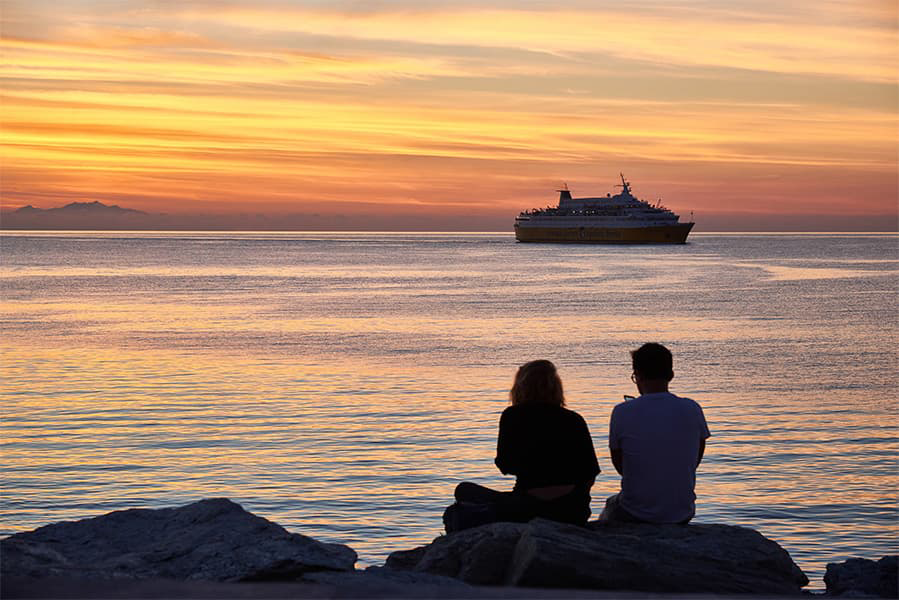Kalamata - Kissamos
Ferry to Crete
Kalamata - Kissamos
Ferry to Crete

Find Kalamata Kissamos ferry prices, view timetables and deals with directferries.co.nz as well as comparing with other crossings from Greece or to Crete to guarantee you save on the ticket price.
Using our Fare Search you can check real time prices, availability and book ferries from Kalamata to Kissamos or alternatively compare this route or the ports with other options.
Compare numerous crossings and sailing schedules for Kalamata Kissamos ferries online now by selecting the place of departure from the Kalamata Kissamos Fare Search and hit the search button.
More routes than anyone else.

Compare fares, times & routes in one place.
Change plans easily with flexi tickets.

Book e-tickets & manage trips in-app.
Live ship tracking & real-time updates.

Top-rated customer support when you need it.
When one thinks of Kalamata, the image of a tough-skinned, purple olive is what will most likely to come to mind. For while the Kalamata olive is world-renowned for its taste and texture, the city after which the fruit was named exists in a state of relative unknown. Not that this obscurity is a reflection of the city’s character. Situated on the jagged coastline of the Peloponnese peninsula in southern Greece, at the arcing end of a crystal-blue bay that flows into the Ionian Sea, Kalamata is blessed with rich history and an idyllic countryside shaped by low mountains. One of the major draws of Kalamata is its historic city centre. The narrow twist of alleys found along the banks of the local Nedon River are home to plenty of ancient landmarks. The 14th century Holy Apostles church - a tiny, tan stone building featuring a tiled roof and quaint bell-tower – was once used by rebels at the start of the Greek Revolution, while the impenetrable walls of Kalamata Castle overlook the city from the summit of a pine-covered hilltop. The port in Kalamata is found at the western end of the city’s scenic, tree-lined promenade. It sits on the shores of a man-made inlet of the bay, the water here tamed by a ring of breakwaters. Ferries leave from the end of a long pier that serves as a marina for local yachts. There is no passenger terminal at the port meaning that provisions can only be purchased from the market stalls that line the seafront or from the nearby restaurants and bars. Despite being the second most populous city on the Peloponnese peninsula, travelling to and from Kalamata can prove tricky. Many of the inner streets are pedestrianised, and only a few main roads service the centre. It is therefore best, particularly for those unfamiliar with Kalamata, to use the cheap system of buses that regularly zip to every corner of the city. Athens is only 2-hours away to the north-east too. The Greek capital can be reached by following the snaking road route that begins on the E55 motorway, slices through the rugged Mediterranean countryside, and crosses the isthmus that connects the peninsula with the Attica region. A couple of ferry routes currently operate from the port in Kalamata on a limited weekly schedule. Lane Sea Lines offer two southbound services across the sapphire-blue surf of the Messenian Gulf, heading to the nearby island of Kythira and the town of Kissamos at the western end of Crete.
There are two ports in the city of Kissamos, an island located on the west coast of Crete; one is used primarily for fishing and mooring small boats with no transfers coming in or out, the other port has modern facilities and is used to connect passengers to the other Greek Islands. The port providing ferry routes lies just three kilometres from the capital city of Kastelli; the busiest area of the island hosting a range of shops, restaurants and hotels. The landscapes surrounding the port area are renowned for being particularly beautiful; rugged coastline, unique rock formations and refreshing greenery alone all make the port worth visiting. The rest of the region offers a quiet, sleepy side not usually associated with the party lifestyle of the majority of the Greek Islands. Getting around Kissamos may require the need to hire a car or rely on taxis, unless visitors are prepared to wait for the unreliable bus service, although that isn’t advisable. The port is within walking distance from the city centre, taking about an hour if walked at a fairly fast pace. Facilities are lacking at the port due to the small size, though the crossings are relatively short so there isn’t a great demand for eating and drinking facilities.